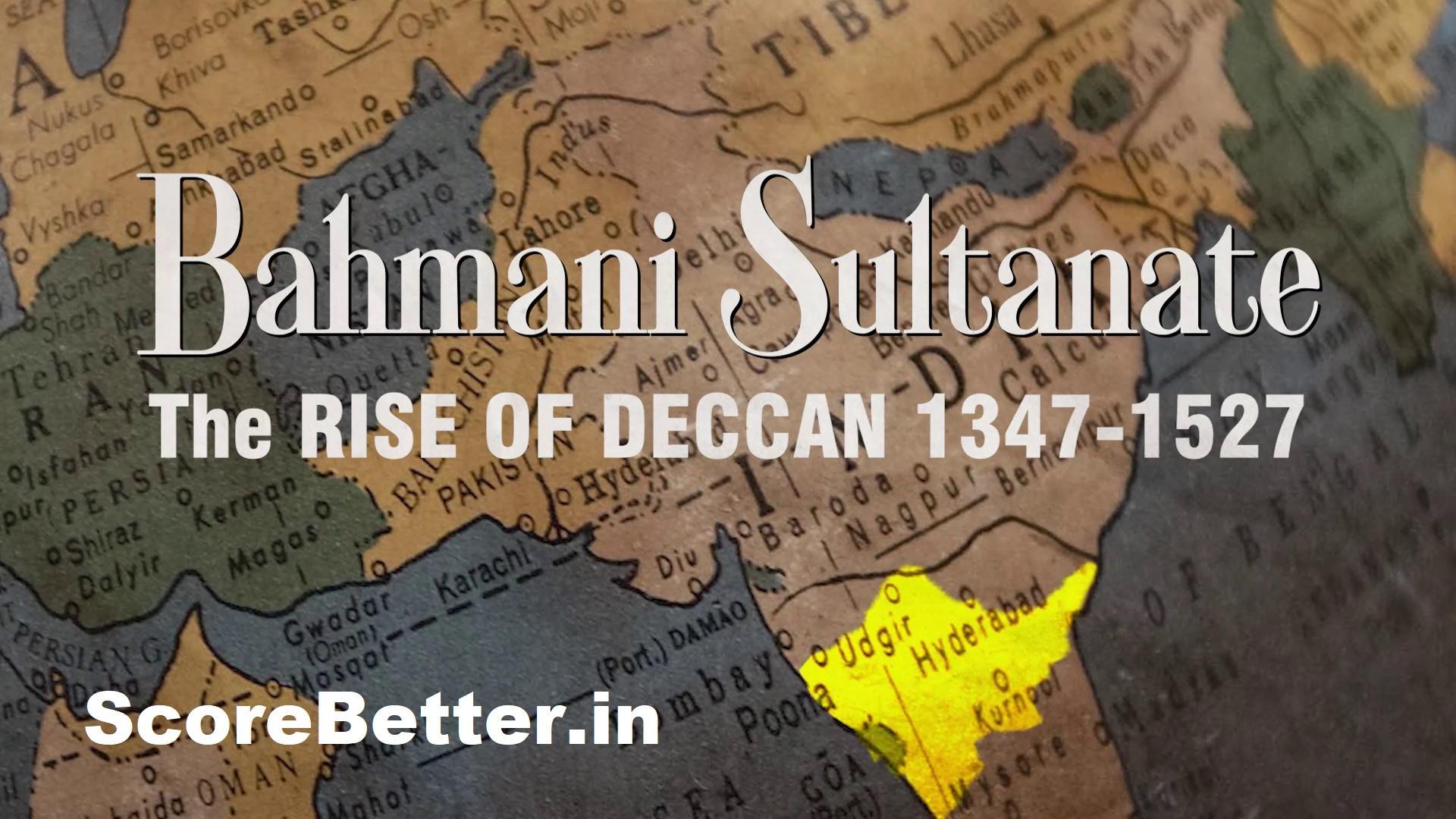The Bahmani Empire was a South Indian state that existed during the 14th-16th centuries. It was founded by a governor of the Delhi Sultanate named Hasan Gangu, who declared himself sultan and established his capital in Gulbarga. The kingdom consisted of parts of present-day Maharashtra, Karnataka, and Andhra Pradesh.
After Hasan Gangu’s death, the Bahamani Kingdom was ruled by a series of sultanates. In the 16th century, the kingdom began to disintegrate due to internal conflicts and external pressures from neighboring states such as the Vijayanagara Empire. The Sultanate split into five independent states: Bijapur, Ahmadnagar, Berar, Bidar, and Golconda.
These new states continued to compete with each other and with neighboring states for power and territory. Ultimately, the Bahamani Kingdom disintegrated into smaller states that were eventually absorbed by the Mughal Empire in the 17th century.
Bahmani Sultanate
- The Bahmani Sultanate was a Persianised Muslim state of the Deccan in South India and one of the major medieval Indian kingdoms. Though the region was ruled by a Muslim it was not a ‘Muslim State‘. Hindus were also part of it.
- The nobles of the Bahmani kingdom were categorized into two categories: Afaquis and Deccanis. Deccanis were nobles of native origin while Afaquis had a foreign origin.
- It was founded by Alauddin Hasan Bahman Shah (in 1347), also known as Hasan Gangu, revolting against the Delhi Sultanate of Muhammad bin Tughlaq.
- Bahamani kingdom acted as a cultural link between the South & the North.
- The Kingdom stretched from north to south from the Wainganga river to Krishna and east to west from Bhongir to Daulatabad. There was a total of 14 Bahaman Sultans.
- The Bahmani Empire was always at war with Vijayanagara Empire for control over Deccan. Firoz shah invaded Vijaynagar and defeated Krishna Deva Raya I.
- Ahmad Shah Wali later shifted Capital from Gulbarga to Bidar.
- Muhammad Shah III became the sultan at the age of 9 after the death of his brother Nizam Shah and Mahmud Gawan served as Prime Minister.
- Bahmani Empire reached its zenith during the time of Mahmud Gawan.
- Kalimullah was the last king of the Bahmani dynasty.
Mahmud Gawan
- He was Iranian by birth and was a trader. He was granted the title of Malik-ul-Tujjar (Chiefs of Merchants) by Humayun Shah.
- For almost 20 years he dominated the state affairs of the Bahamani. Under his leadership, the Bahamani kingdom saw a resurgence.
- He divided the kingdom into eight provinces called Tarafs. Each Taraf was governed by the Tarafdar. The salary was paid in cash or by assigning a Jagir.
- A tract of land called Khalisa was set apart for the expense of the Sultan.
- Introduced the use of Gunpowder in the war against Vijaynagar Kings.
- He built a college at Bidar in Persian Style architecture.
- Executed in 1481 by Muhammad Shah, Deccan nobles plotted against him.
After Gawan’s Execution, the Bahmani kingdom disintegrated into Five Kingdoms (Known as Deccan Sultanates):


Nizam Shahis of Ahmednagar (1490-1633 AD)
- Founder – Ahmad Nizam Shah.
- It was conquered & annexed by Shah Jahan in 1633.
Adil Shahis of Bijapur (1490-1686 AD)
- Founder – Yusuf Adil Shah.
- The famous Gol Gumbaz was built by Muhammad Adil Shah.
- Bijapur was conquered & annexed by Aurangzeb in 1687.
Qutub Shahis of Golconda (1518- 1687 AD):
- Founder – Muhammad Quli Qutub shah.
- He built the famous Golconda fort and made it the capital.
- Muhammad Quli Qutub Shah founded the city of Hyderabad (originally known as Bhagyanagar) and also built Charminar.
- It was annexed by Aurangzeb in 1687.
Imad Shahis of Berar (1490- 1574 AD)
- Founder – Fatullah khan Imad ul Mulk.
- Capital – Daulatabad
- Annexed by rulers of Ahmednagar
Barid Shahis of Bidar (1528- 1619 AD) :
- Founder – Ali Barid
- Annexed by Bijapur rulers
Art and Architecture of the Bahmani Empire
The architecture was highly influenced by Persian architecture. They invited architects from Persia, Turkey, and Arabia.
The Gulbarga fort & Jama Masjid in Gulbarga, Bidar Fort, and Madrasa by Mahmud Gawanin Bidar, are the major architectural contributions.
Gol Ghumaz was built by Muhammad Adil Shah; it is famous for the so-called “Whispering Gallery”
Ibrahum Adil Shah introduced ‘Dakhini’ in place of Persian as the court language.
.
Read More Articles on History or Art & Culture
Follow on Youtube Channel Score Better
Join Us on Telegram For More Update
.
